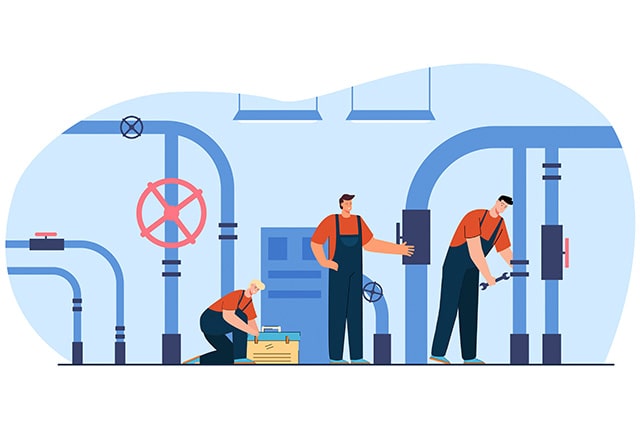Optimize Your Business With Good Professional Voice Messages

In the modern business world, first impressions are crucial.
Your professional voice messages is often the first point of contact between your business and your customers.
It is therefore essential to ensure that this first contact is professional, welcoming and informative.
In this article, we will explore the importance of a professional voice message, give you advice on writing effective welcome messages and inform you about professional integrated voice response.
What is A Professional Voice Message?
A professional voice message, also known as a voicemail message, is a recorded voice message, typically done by a voice over, that your customers hear when they call your business.
It's a valuable opportunity to present your business in a professional manner and provide useful information right from the first contact.
The 4 Keys to Writing A Professional Voice Message

1. Be Professional And Welcoming
When writing a welcome message, make sure it reflects the professional image of your company.
Use a friendly yet formal tone, and ensure that the voice over is clear and easy to understand.
2. Clearly Identify Your Company
Always start by clearly identifying your company.
State the name of your business and, if necessary, briefly mention what you do.
3. Provide Useful Information
If possible, include helpful information in your professional voice messages, such as opening hours, your company's address, and menu options to assist callers in reaching the right person.
4. Use On Hold Telephone Music Appropriately
If you use on hold telephone music, make sure it's pleasant to listen to and not too intrusive.
Avoid short, repetitive loops that could frustrate callers.
The Importance of a Professional IVR System

A professional IVR (integrated voice response) system defines how calls are managed within your company.
It plays a crucial role in communication efficiency and the customer experience.
Here are some points to consider when setting up an integrated voice response system:
1. Staff Training
It is essential to train your staff in the effective use of the integrated voice response system.
Every employee should be familiar with the basic functions and be able to handle calls in a professional manner.
2. Configuration of Menu Options
Ensure that menu options are clearly defined to allow callers to choose the right direction.
This ensures smooth and quick navigation to the correct service or person.
3. Efficient Call Transfers
Establish clear procedures for call transfers, message taking, and handling calls on hold.

This ensures that each call is handled consistently.
4. Regular Updating of Your Professional voice message
Make sure to regularly update your voice messages to reflect the current information of your business, such as special opening hours or ongoing promotions.
Well-defined professional voice messages and professional integrated voice response systems are essential elements for providing an exceptional customer experience.
5. Recording Professional Voice Messages
It is crucial that your professional voice messages are recorded with high-quality voice overs, thereby reflecting a professional image of your company.
A professional, pleasant, and clear voice sets a positive atmosphere from the beginning.
By investing time and effort in these aspects, you strengthen your company's image and create positive relationships with your customers.
Need Inspiration For Writing Your Professional Voice Messages?
Don't worry, we've created over 75 examples of professional voice messages that you can use right away.
Discover our examples of professional voice messages
Feel free to explore our voice over services for professional, personalized, and high-quality professional voice messages.
We're here to help you make every phone interaction professional.
Get an instant quote now!
Related Posts

Everything You Need to Know About On Hold Messages for Utilities
The moments your customers spend on hold can make or break their perception of your business. This is especially true in the utilities industry. Whether it’s a call about a gas leak, a billing question for water usage, or a power outage complaint, every second counts.

The Impact of On Hold Messages on Customer Experience
When someone calls your business, every second counts. Hold time isn’t just a waiting period, it’s a valuable opportunity to shape how your brand is perceived. A professionally recorded on hold message can make the difference between a caller feeling frustrated… or feeling taken care of.

Music On Hold or Messages On Hold?
In today's attention economy, a lot of effort is put into getting and holding people's attention. For a long time now, phone systems have made the use of hold music fill the void that would be felt by callers who have been placed on hold. The music helped signify to the initial telephone users that the strange device they were holding was still functioning and had not been disconnected.




